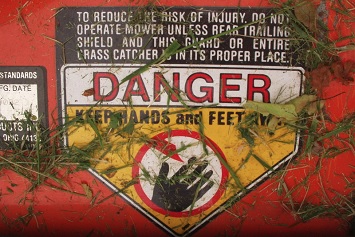Summer is fast approaching in the northern hemisphere. Soon enough, facilities management professionals will be out in force, working hard to keep their grounds and buildings attractive for tenants and customers, with the familiar growl of mowers and lawn tractors, the howl of leaf blowers, and the whiz of string trimmers echo through the land. If you have employees who are taking care of your landscaping, make sure they know what hazards they face—and how to stay safe.

Equipment hazards are among the most obvious hazards workers face. Here are some safety tips you can pass along.
Mowers
Both riding mowers and push mowers can be dangerous to workers. They need to know:
Mowers are noisy.
- Noise levels are typically around 90–100 decibels.
- Keep mowers in good repair to minimize noise levels.
- Wear hearing protection.
Mower blades can throw objects into the air.
- Make sure guards, including drag shields and discharge deflectors, are in place.
- Don’t remove a grass catcher or unclog a discharge chute with the motor running.
- Wear safety glasses.
- Clear the work area of trash, debris, rocks, and other items that might be thrown by the mower.
- Keep people out of the work area.
- When crossing gravel, do not leave the blades spinning.
Mower blades are powerful enough to cause cuts and amputations.
- Keep your hands away from the blades.
- Before cleaning or performing maintenance on a mower, shut it off, let the engine cool, and disconnect the spark plug.
- Wear nonslip safety shoes.
- Do not mow on slippery surfaces.
- With a push mower, mow across slopes so that if you slip, your feet will not go under the mower (on the downhill slope), or so the mower will not roll back onto you (on an uphill slope).
Mower engines are hot!
- Don’t touch a hot engine.
- Don’t refill the mower until the engine cools.
Riding mowers can roll over.
- Never mow a wet slope with a riding mower.
- Follow the manufacturer’s instructions for mowing across, up, or down slopes and hills.
- Do not mow a slope that is too steep for the mower, according to the manufacturer’s instructions.
- Mow slowly on slopes.
- Do not try to stabilize the mower by putting your foot on the ground.
- Do not try to stabilize the mower with makeshift weights.
- Watch for holes, edges, obstacles, and uneven terrain that could tip the mower.
- Be extremely careful in tall grass, because it can hide obstacles, hazards, and edges.
